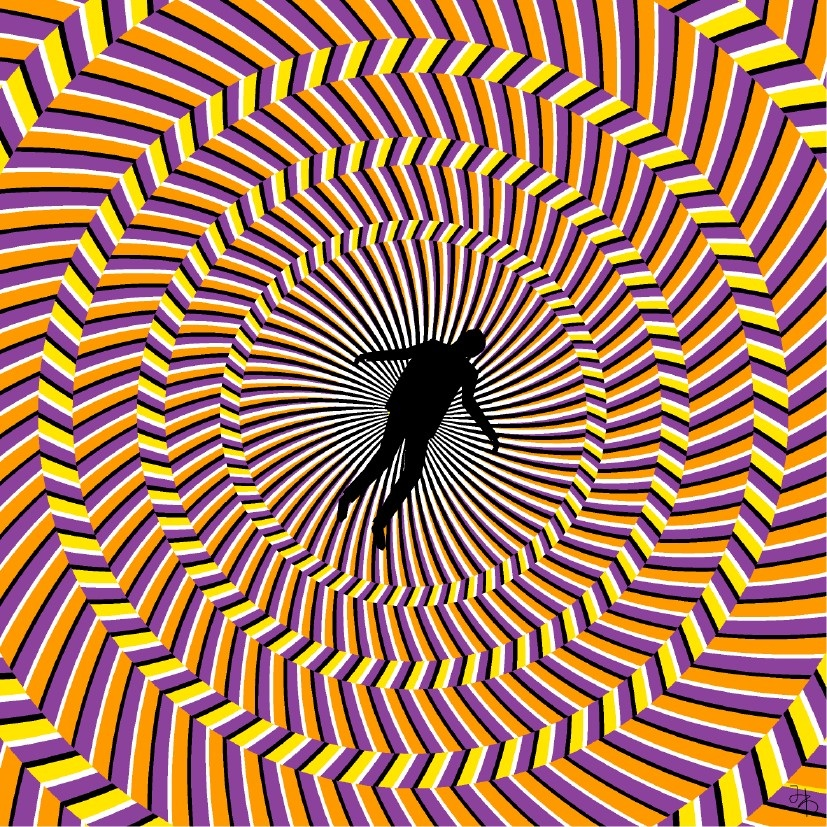
Psychiatry is a personal science, since the patient must be treated primarily as a person: he has a history, family, social problems, language. The latter is usually not very important in psychiatry: the patient can say something, but when he is silent, we can move into what I call "veterinary psychiatry." But I understand the work with a person in a different way. Unlike the personality of a patient or the personality of a psychologist, for some reason almost nothing is said about the personality of a psychiatrist in both Russian and world literature.
I can fill this gap only by talking a little about myself. I was brought up in a philological family: my mother was a translator from European languages, and my father was an orientalist. As a child I loved fairy tales, hence my interest in folklore. At the age of six, my father gave me a book by Ignatius Krachkovsky "Above the Arabic Manuscripts", since then I have been interested in Sufism and a little in the Arabic language. At the medical institute, I attended the scientific circle of psychiatry - hence my interest in psychoanalysis. Another moment that determined my professional interests is the traumatic experience of emigration and switching to another language. The need to overcome this problem led me to think about what languagelessness is and how we do not understand each other.
"Doctor, he's talking nonsense"
In a psychiatric hospital in Jerusalem, there were five doctors: from England, France, Ethiopia, Russia and one Hebrew-speaking head of the department. Once we had an Arabic-speaking patient. We asked the nurse to translate for us, but gradually began to understand that something was wrong: the patient answered our questions for a long time, and the nurse translated his answers in monosyllables. To the remark, he objected: "Doctor, he is carrying some kind of nonsense."When a good nurse in a psychiatric ward tells me that a patient is delusional, it is a classic situation of social misunderstanding (or misunderstanding of one's role). In psychiatry, we sometimes consider our lack of understanding as a diagnostic sign: "If I don't understand, it doesn't mean that I don't understand, it means he's a fool." For example, one of the well-known features of schizophrenic speech is neologisms. When doctors in our department look at a patient who speaks Hebrew, and he gives out a neologism, it is interesting to watch how doctors who do not speak the language mark him. Some I called conditionally "arrogant", and others - "disturbing": the "impudent" doctor says that everything that he does not understand is a neologism; "Anxious"
It also happens that a patient who does not understand the social context has a brain tumor or semantic aphasia. There may be many other options, and they need to be distinguished.
In 1942, the Geneva linguist Walter von Wartburg wrote: "We are talking about language proficiency, but in reality the language speaks to man." This idea became popular in the humanitarian community, especially after Joseph Brodsky 's Nobel Prize speech (1987). But, "unlike the laws of nature, linguistic rules ... provide for the possibility of their violation." And the essence of the individualization of the language is that, as the linguist Emile Benveniste said, we assign it to ourselves every time. A
the psychotic patient appropriates not only the language, but the whole situation.
What is aphasia
There are several forms of aphasia; I would like to highlight two. Dynamic aphasia is a violation in the left premotor cortex and, as a result, the difficulty or impossibility of developing an utterance, the decay of internal speech. This disorder, coupled with general spontaneity, lack of initiative, echolalia (automatic repetition of someone else's speech. - Approx. T&P ) and echopraxia (involuntary imitation of the movements of other people. - Approx. T&P ) is very similar to some forms of schizophrenia.Another closely related form is semantic aphasia, which is characterized by impressive agrammatism (difficulty in understanding lexical and grammatical phrases) and is very similar to the inability of psychotic patients to understand figures of speech and correctly interpret proverbs and sayings. In fact, in the quiet stage, schizophrenic patients understand quite well the proverbs and sayings they are familiar with, they simply reproduce them as a cliché.
How to measure the amount of tongue in your head
In the last 50 years, many works have appeared on the role of language in anthropogenesis. Thus, the authors of the article "The hypoglossal canal and the origin of human vocal behavior" tried to understand the time of the emergence of language on the basis of the size of the hypoglossal canal through which the lingual nerve passes. This work has an interesting methodology: if it is impossible to archeologically detect language as an organ of speech, since the nerve is not preserved, then it is possible to measure the size of the hole in the bone and thus understand the degree of innervation ( supply of tissues and organs with nerves. - Approx. T&P). However, the authors of the work pass from information about the size of the channel to conclusions about the symbolic behavior of a person, and this is a rather strong assumption.One way or another, we cannot measure the size of the hypoglossal channel in our patients and, by the degree of its innervation, understand how much they speak the language. But in the last half century, the neurolinguistic direction began to develop rapidly. For example, in one experiment, French scientists let one-day-old children listen first to meaningful French and Arabic speech, and then, on the contrary, to meaningless speech and, using infrared spectroscopy, studied the reaction of the babies' brains. When babies heard French speech, their left parietal region, that is, Wernicke's zone, which is responsible for understanding speech, was excited. When they turned on the Arabic one, the symmetrical right zone worked. And in the case of meaningless sounds in both languages, bilateral excitement was observed. Means,
In another similar study, scientists recorded the screams of babies and found that the typical screams of French babies were different from those of little Germans.one-day-old children responded correctly to speech they heard during fetal development and could distinguish it from speech in an unfamiliar language.
However, then neurologists, neuropsychologists, psychologists and other scientists for some reason decided to find correlations between behavior and what is not in the brain. For example, in one study tried to distinguish between two types of love - romantic and sexual. The subjects were placed in a neuroscan, they were shown something and tried to understand where their reaction was localized (the problem is that nowhere). As part of another methodologically flawed work, scientists have tried to find a zone in the brain that is responsible for non-religious belief.

Psychiatric problems
There are many problems in modern psychiatry. There is a question of identifying units of analysis: what are we analyzing - personality, disease, syndrome, symptom? Another problem is the relationship between verbal (speech and auditory) hallucinations and language, delusion and consciousness, delusion and language. It is clear that verbal hallucinations somehow correlate with language, but how and why is not clear. We have no real definition of delusion, and we have to take the definition of language from linguists (but we don't). There are also problems of dividing the neurological and psychiatric approaches to language, issues of aphasia and the language of psychosis, the problem of the relationship between the consciousness of the diagnostician and the consciousness of the patient. When I just talk to a patient, he does not hit me or bite,There is a problem of creating a metalanguage to describe the psychopathology of consciousness. And here psychiatrists are no better than the neurophysiologists I described above. 2018 article authors, who received the prize of the European Psychiatric Association (EPA), tried to understand whether it is possible to make a differential diagnosis for some language manifestations, because simulators who claim to hear voices understand perfectly well that the doctor will not get into their heads, and believe that we do not have objective criteria (in fact, they are, but of a different order). To get real indicators, scientists asked patients to write texts, then compared them, applied statistical methods and came to the conclusion that depressed patients say differently. I already know this, but the article raises questions: how many patients need to be examined, how many texts need to be obtained, how to divide these texts, what to analyze? Probably,
There are also more serious groups of problems.
When I asked a question about this at one congress, they looked at me like an idiot. When in 2002, at another congress in Berlin, the famous scientist Timothy Crowe talked about the signified and the formifier, psychiatrists listened with amazement - meanwhile, Ferdinand de Saussure's "Course in General Linguistics" for more than a century.In the scientific literature, especially in the one that deals with thinking disorders, schizophrenia, the concepts of "language" and "speech" are often not separated.
When analyzing the language of a psychotic, there is often no separation of the language of generation of a symptom (the system with which the patient produces speech) and the language of description of psychosis (the system with which he describes this text). To do this, you need to see how the patient works with the tongue before psychosis, during and after it, because when he is not in an acute state, everything is different for him. But usually it is simply said that a patient diagnosed with schizophrenia according to ICD-10 (International Classification of Diseases. - Approx. T & P ) "everything is broken." In the literature on bilingual psychoses, there is also not a word about the stage of the disease.
And in one scientific article (2018) it is even stated that the patient says one thing, but thinks another, that there is no connection between linguistic and mental disorders. Finally, consideration of the diagnostician's language, completely removed from the field of research, does not allow us to approach the problem of understanding. After all, I, a diagnostician, also have thinking, but no one takes me into account.
Schizophrenia or speech impairment?
In the 20th century, brilliant linguists and neuropsychologists, having united, achieved remarkable results in the field of aphatic disorders. The union of Roman Jacobson and Alexander Luria gave one of them an impetus in understanding the function and role of language, and the other - the opportunity to build a new classification based on neurodata and linguistics. By the 1960s, many authors had moved from simply describing the different types of aphasia to understanding what is disturbed and where. We have finally found the point where language and consciousness, language and neurolinguistics unite. Moreover, we began to understand how to rehabilitate the patient.True, this works in neurology, and not in psychiatry, because it cannot be said that the language of a schizophrenic is just a variant of aphatic speech. A schizophrenic patient is indeed similar to an aphatic patient, and even the eminent neuropathologist and neuropsychiatrist Karl Kleist writes in his 1960 works that sensory aphatic disorder is similar to schizophrenic one. But this is like comparing a pregnant woman and a patient with ascites - in both cases, the abdomen is enlarged.
In an effort to further gain experience from other areas of knowledge, psychiatrists turned to genetics. Scientists have discovered in one English family a gene that led to a total language disorder. Psychiatrists understood: if there is a gene for language, then happiness is near. However, the problem is that you need to understand how and why the language is broken. Researchers have found that schizophrenics have impaired methylation (modification of a DNA molecule without changing the nucleotide sequence. - Approx. T&P ) of this gene - but after all, it is violated in 10 thousand other genes! And in this family, in fact, there were violations of a different kind and no one was crazy.
Understanding the role of language in schizophrenia requires going beyond both language and schizophrenia. Timothy Crowe's hypothesis is that
In the article "Is schizophrenia the price that Homo sapiens pays for language?" (1997), he writes that at a certain stage there was a genetic shift that led to the development of interhemispheric asymmetry and made it possible for the development of language. Accordingly, the absence of interhemispheric asymmetry leads to the development of schizophrenia.schizophrenia is the payment of Homo sapiens for the use of language.
But it is possible to take a different path, combining genetic, linguistic and mythological studies of the last 20-30 years. Authors of the book “Myths and Genes. Deep Historical Reconstruction ”write that today with the help of genetics it is possible to build phylogenetic models in different areas of knowledge and see where divergences and disturbances took place. There is an example in the book: if we compare two lists of the same chronicle and find errors in both, then we can assume that both of these lists go back to some more ancient version. By roughly knowing how errors accumulate, we can figure out where the source code is. And it doesn't matter at all whether this is done according to archaeological, genetic or textual data.

The text is clear, the reality is not
In linguistics, there is the problem of reference, the correlation of the text with reality. If we consider the simplest scheme, then several options can be distinguished: the text is clear or incomprehensible, the reality is clear or not.The best option is when both the text and the reality are clear. I have no examples of this, I do not know what it is.
An example of a variant when neither the text nor the reality is clear is the Voynich manuscript named after the discoverer Mikhail-Wilfred Voynich, who acquired it in 1912. It is still unclear who, when and in what language wrote this manuscript. Three groups of fragments were identified in it: botanical, anatomical and philological, but the text has not yet been deciphered. Perhaps this is generally just a fiction, a joke.
The third option is when the text is clear, but the reality is not. We can decipher a classic text dating back to the Sumerian period of the XXII century BC. e., but the historical reality that stands behind it, we reconstruct with great difficulty. Finally, an example of a situation where the text is incomprehensible, but the reality is clear: as Boris Uspensky writes, in non-written languages, for example, among the natives of the Aranta, the situation is often first staged (something like a theatrical performance is performed) and only then the corresponding text is reproduced. This is a bit like what we meet in a psychiatric clinic: a patient acts out a text, and then we try to understand the reality behind it.
Situations when the text is understandable, but the reality is not, in psychiatry "diagnoses" correspond to historical figures. In one Canadian article, researchers took the Old Testament and diagnosed everyone. This one heard voices, this one saw illusions, Christ is a madman, and his disciples were hallucinating. It turns out that scientists have understood the text, but the historical reality behind it has not.
However, psychiatry does not seek to understand reality; the very understanding that a person is sick is important for a doctor. But Yuri Lotman wrote that we can accurately translate some ancient text, but without understanding its function, we still will not understand its meaning. Thus, modern psychiatrists have diagnosed the authors of avant-garde texts, in particular Velimir Khlebnikov and Daniil Kharms. The latter did indeed receive a diagnosis of schizophrenia in the late 1930s. But if the authors of his biography write that Kharms feigned illness in order not to join the army, then psychiatrists say that, judging by his texts, he really was crazy. This psychiatric diagnosis is the very Voynich manuscript, when doctors do not understand either reality or the text behind it.
And, finally, the text is incomprehensible, but the reality is understandable - this is when a patient comes to me, whom I know, but who refuses to speak to me. The reality is known to me, but the diagnosis is not.
Thus, the objects of diagnosis are the speech and actional behavior of the patient, his inner world and the nature of his presentation. A situation that is completely opposite to mental health is a surimulation, when a patient with a diagnosis pretends to be sick, not realizing that he is sick.
"The queen of all symptoms"
The queen of all symptoms is delirium: an empty statement, a violation of the mechanisms of meaning. But in fact, we do not really understand what it is, we do not have a good definition and clinical criteria. Delirium is too similar to reality. To study the concept of delusion, you need to separate language and speech, consider delusion from a purely linguistic point of view - plot, motive, theme - and then study its content. That is, consider the existing motives and their genetics.Once it occurred to me that delusions can be shared in the same way as Vladimir Propp divided fairy tales. The existing division by topic - delusions of grandeur, delusions of small proportions, erotomanic delusions, etc. - is not based on anything. If we begin to consider the content of delusion in a structuralist way, it turns out that its different types can be reduced into two structures.
The first is where the patient puts himself in the center and ascribes to himself some quality, positive or negative. For example: I am a mighty Napoleon, I have countless treasures. Or: I am a monster, I only bring harm to the whole family, etc. It is important how the patient himself relates to his main quality. For example: I am a prophet, which is good. But it also happens otherwise: I am Napoleon, but I do not want to be one. Psychiatrists said that this does not happen (this function of delirium has not been determined before), but a patient came to us who confirmed my hypothesis. He said that he was a prophet, but did not want to be one, as it was too difficult for him. Formally, it was a delusion of grandeur. But what about the fact that, according to a person, he does not want to be a prophet? It also turned out that such patients have the maximum suicidal danger. Unfortunately, this patient confirmed this theory.
The second group of delusions - when the patient does not ascribe any qualities to himself, believes that he is influenced, he is manipulated. A classic example is small-scale delirium, when neighbors steal things from dementy patients and pee them under the door. The grandmother does not leave the house, and if suddenly it is necessary, she leaves signs to understand whether they entered the apartment. And he sees: the hair is not there, the thread is displaced - the bastards, all the same climbed. The delirium of the communal kitchen: "I cooked the soup, and they pee into my pot."
When we build the right structure, we can properly group the sick. But the main thing is that it has clinical significance.
The core of delirium will begin to collapse when the patient's attitude towards delusion changes.If we isolate the core of delusion, then the exit from the psychotic state will not be when the patient says that no one is pursuing him, but when he says that the agents have lost the ability to influence him.
It is also important not to confuse delusions as a process and as a result. Delusional production can be viewed at several levels. First, at the level of neurolinguistics as a process of speech production. Secondly, at the level of an already created narrative, where narrative analysis can be applied. At the third level, we ask the question: when and why does the psychiatrist begin to label the situation as delusional?
At what age does delusion occur? Child psychiatrists claim that from the age of three. What should a child develop at this age? First, the ability to formulate a cultural contextual narrative. Secondly, the child must form an individual base of plots. Thirdly, egocentric speech must mature and move into inner speech. Having built this scheme, we can already talk about indirect data. For example, children under the age of seven report dreams only 20% of the time. Remembrance of dreams correlates with the ability to think imaginatively. Visuospatial skills are associated with the parietal lobe, which is fully mature by age seven. Just by this age, a child can give out real delirium.
So
Therefore, we proposed a rough definition of delusion, with which psychiatrists completely disagree: “Delusion is a collection of related texts / narratives in which the patient endows with“ special qualities ”(special meaning) either himself or someone or something from the environment of the world, produced on the basis of a cardinal breakdown of the individual sense of the personality and having resistance to all basic meanings that exist before such a breakdown ”, which is the essence of psychotic illness.if schizophrenia is the payment of Homo sapiens for the use of language, then delirium can be called human payment for the use of culture.

Anthropological Psychiatry
As Martin Luther argued, Scripture can be interpreted as Sola Fide ("only by faith"), Sola Gratia ("only by grace"), Sola Scriptura ("only by Scripture"). Likewise, we can interpret the patient's text only by faith (that we can understand him), only by grace (treating the patient as a person) and only by "Scripture" (that is, treating the text as a text, and not as a unnecessary garbage).To summarize, by anthropological psychiatry I mean the area of theoretical psychiatry, which is characterized by:
1) separation of the phenomenon and its interpretation, ontological and phenomenological approaches;
2) separation of the story about the event and the event itself;
3) consideration of texts and narratives using philological approaches, narratology;
4) recognition of the linguistic and cultural consciousness of the diagnostician as the most important part of the diagnostic procedure;
5) the use of anthropological research methods (inclusive observation, field observation) to describe individual and typical cases;
6) understanding the context and contextual phenomena.
Anthropological psychiatry must be contrasted with the anthropology of psychiatry, where anthropologists can view psychiatric behavior as a specific type of behavior. Anthropological psychiatry should include genetics, mythology and linguistics. Only then can we come to understand when and where psychosis originated.
